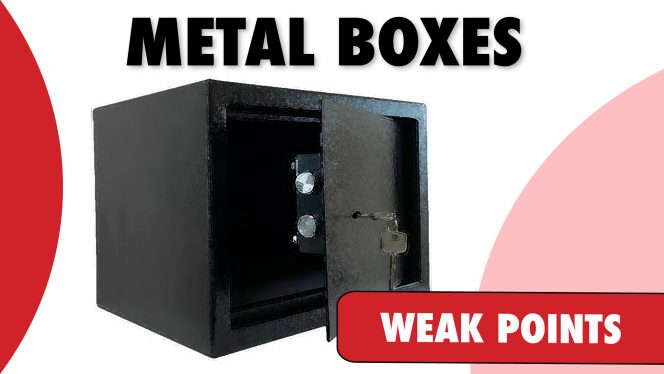As promised, in this blog we look at the main weaknesses of metal boxes, often incorrectly called safes, and some of the ways thieves open them.
It should be noted that these boxes are not certified in any way and, unlike professional safes and most security boxes, are mostly imported from the Far East and are generally very cheap.
In the last blog we looked at the differences between professional safes, home security boxes and metal boxes. If you missed the blog, or have any doubts about it, please have a look here.
The main weaknesses of metal boxes include:
1. Reduced weight and volumes.
2. Poor quality of materials used.
3. Approximation in internal components.
4. Lack of testing against main burglary tools.
5. Internal button for changing the combination (even when the door is closed!)
These features make it easy for burglars and thieves to open with burglary tools (and even without!), as demonstrated by several videos on the Internet. As an example, have a look at the following two videos:
The video shows how a single blow is enough to move the electromagnet inside the door, which opens the cassette when it returns. Obviously, if it is secured with dowels and plugs, it cannot be lifted, but with a blow of the hammer, even though the box does not move, because it is fixed to a cabinet, the internal (sprung) components, including the electromagnet, will move.
The electromagnet is a pin that is extracted or returned depending on whether or not it receives an electrical impulse. If the impulse is mechanical (such as from a hammer blow) and if the electromagnet lacks appropriate protection, the pin will retract and the box can be easily opened.
On the other hand, in this video (up to min. 2:45), we see how the combination can be changed by means of the internal button, which is very often present in this type of box, regardless of the position of the door.
If the thief manages to pass a wire through a small hole (e.g. one of the standard fixing holes not used, or a hole drilled in the box with a standard cordless drill) and press the internal button, he can change the combination. On the contrary, in security safes, only the owner can change the code, as the door of the safe must be open to perform the combination change operation (the most advanced electronic safes are in fact equipped with sensors that detect the closed or open position of the door mechanism).
In conclusion, although in some (rare) cases a metal box may be considered sufficient, it is good to be aware of the differences between the 3 macro-categories of safes and to be able to choose between the many options on the market according to one’s specific needs.
Consult Viro’s range of security safes for home, private and hotel use.
